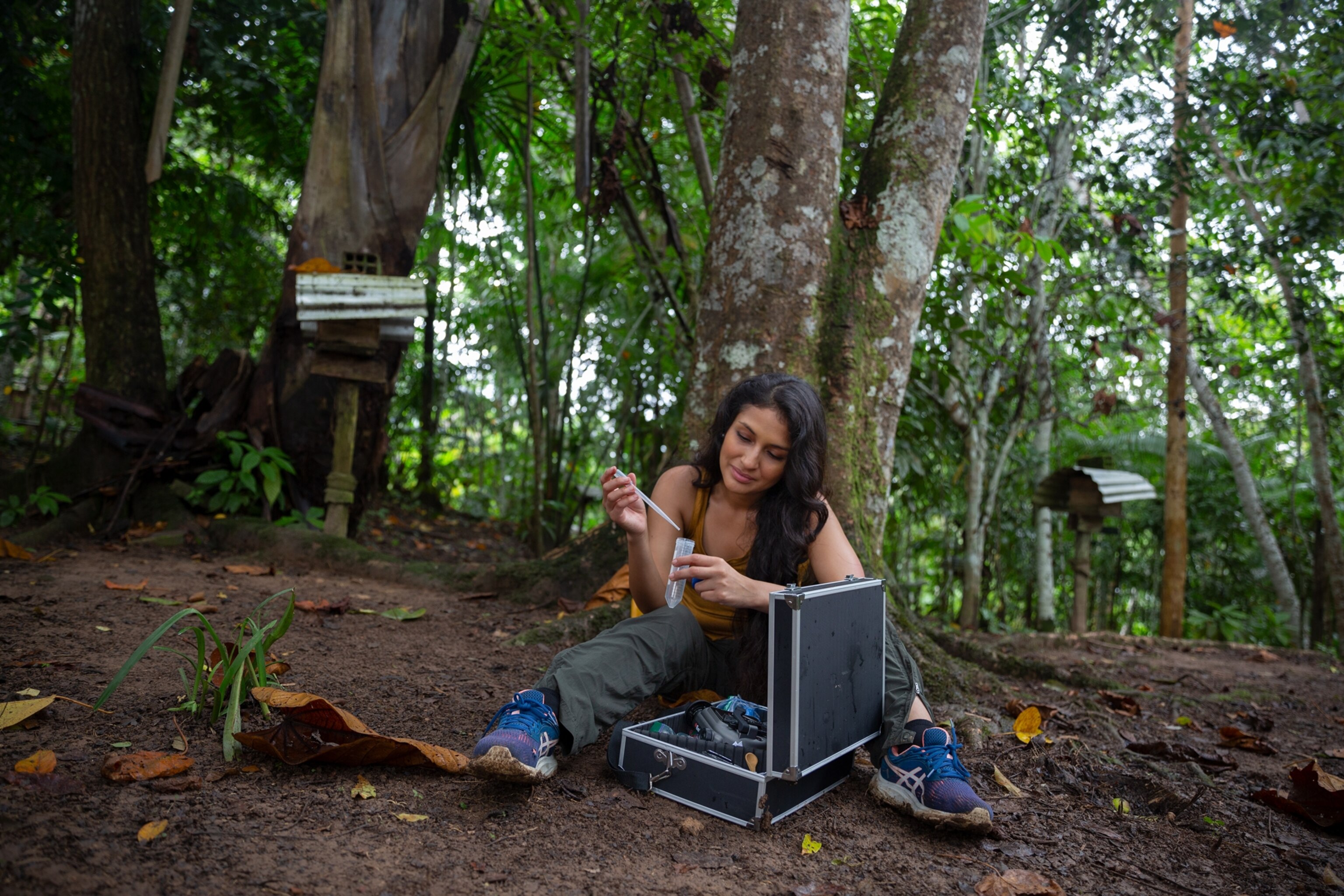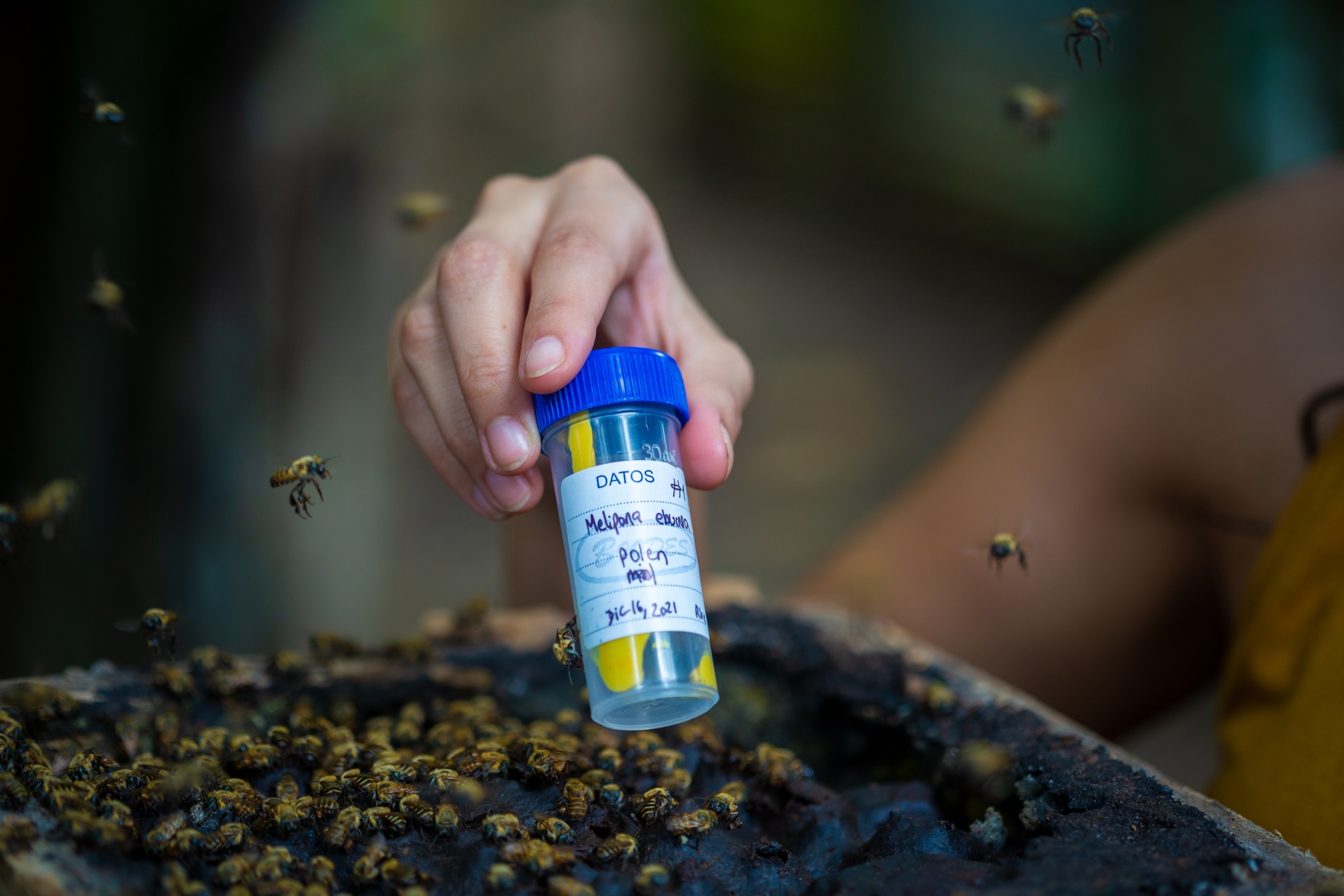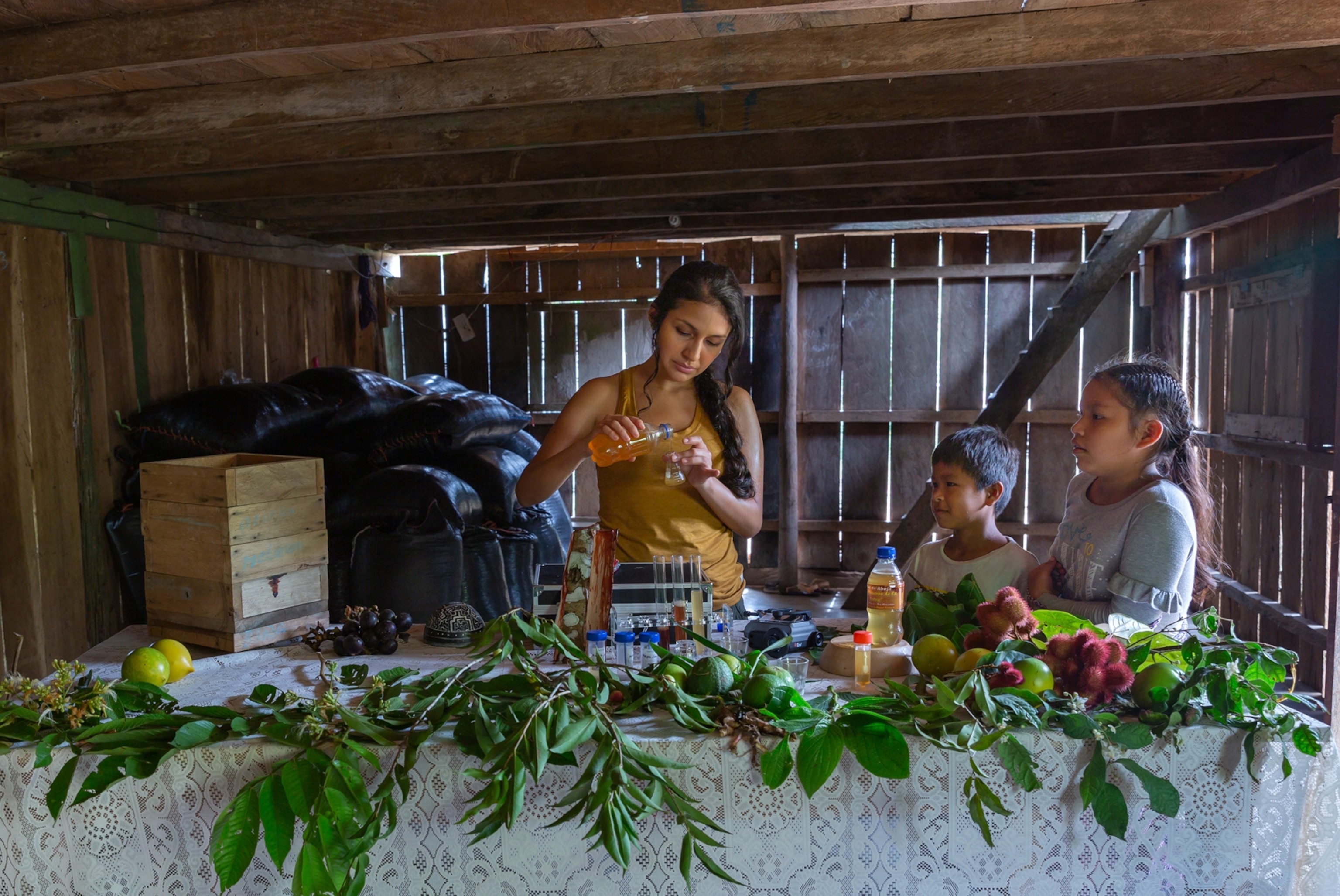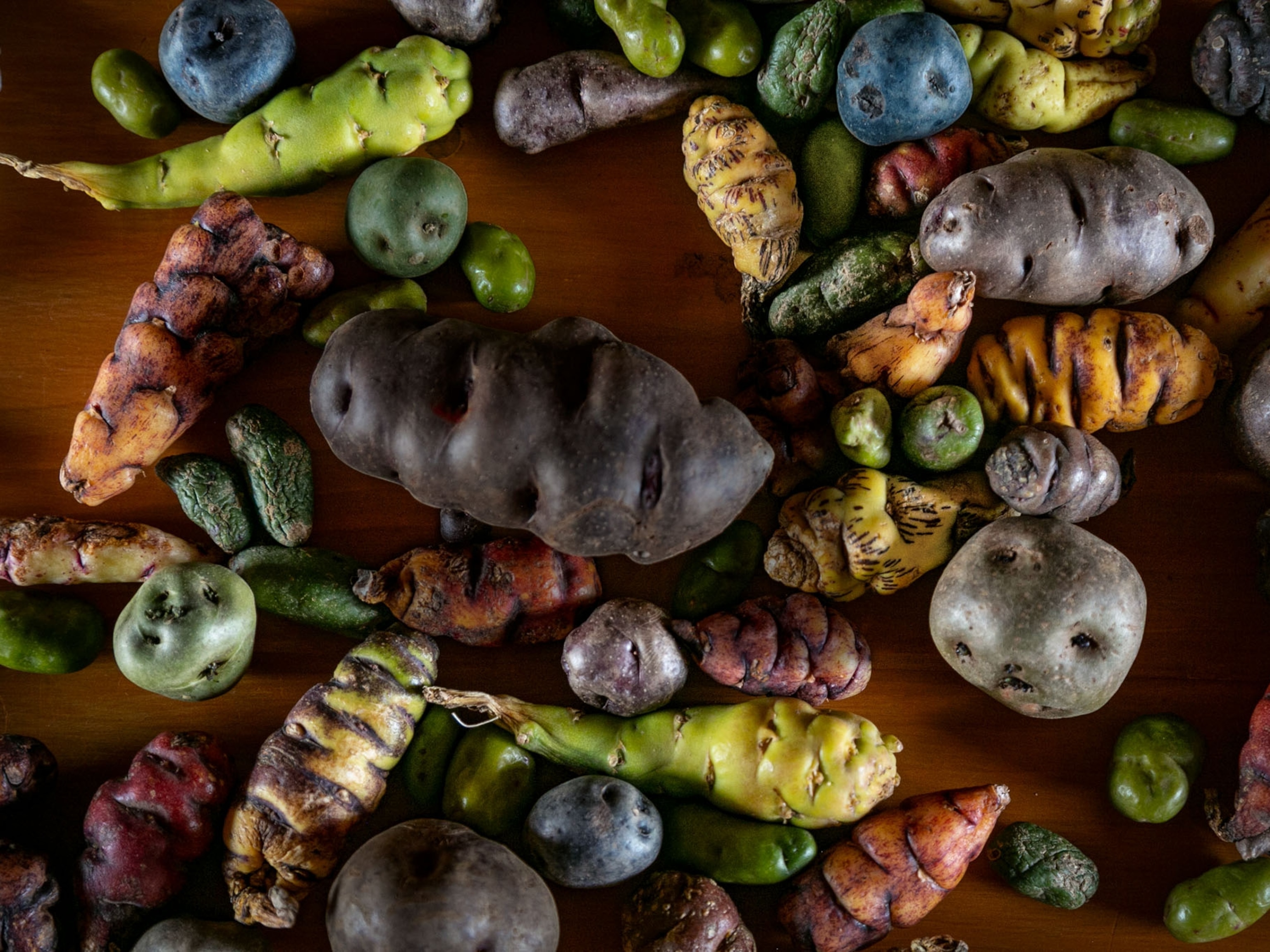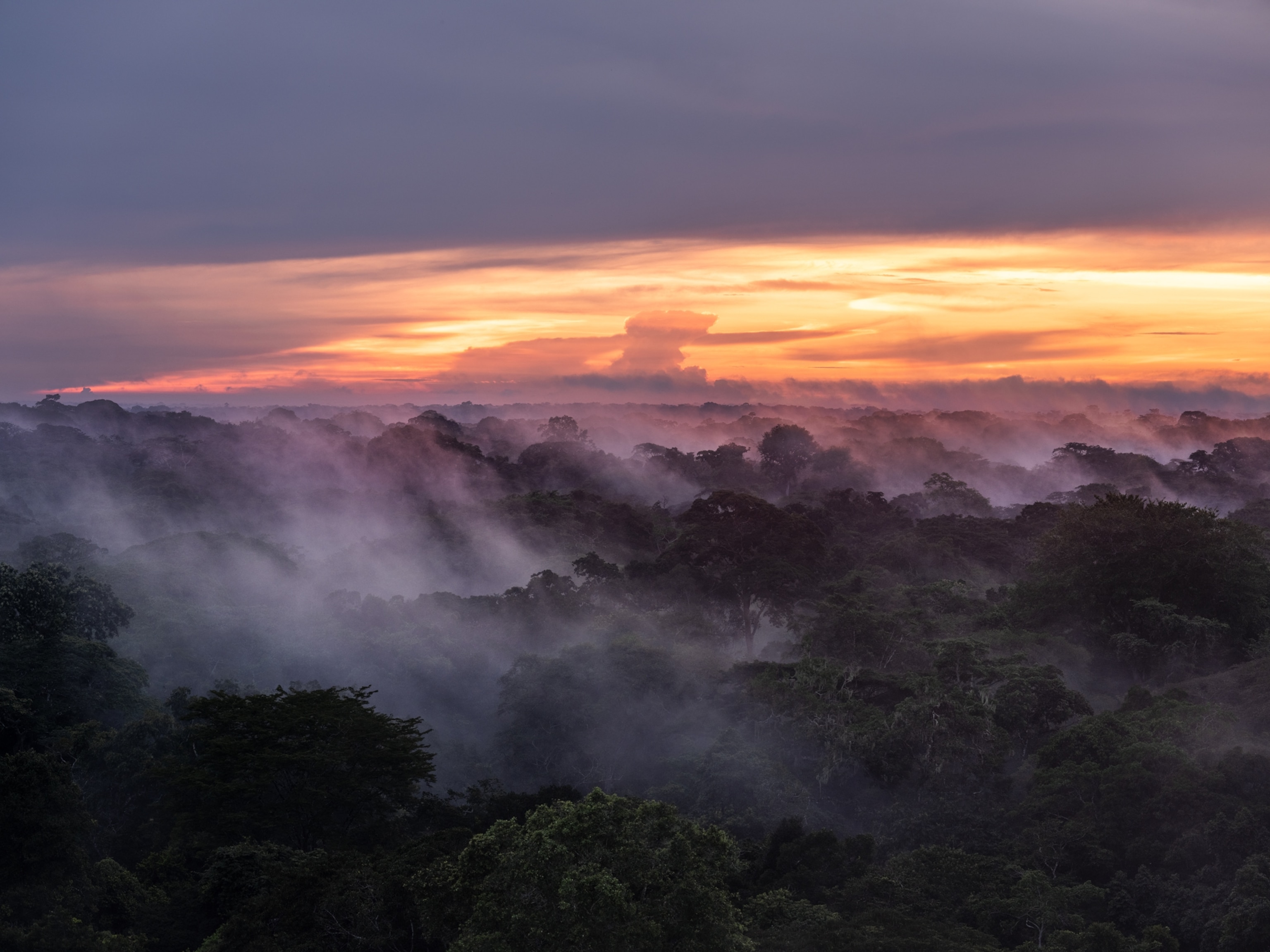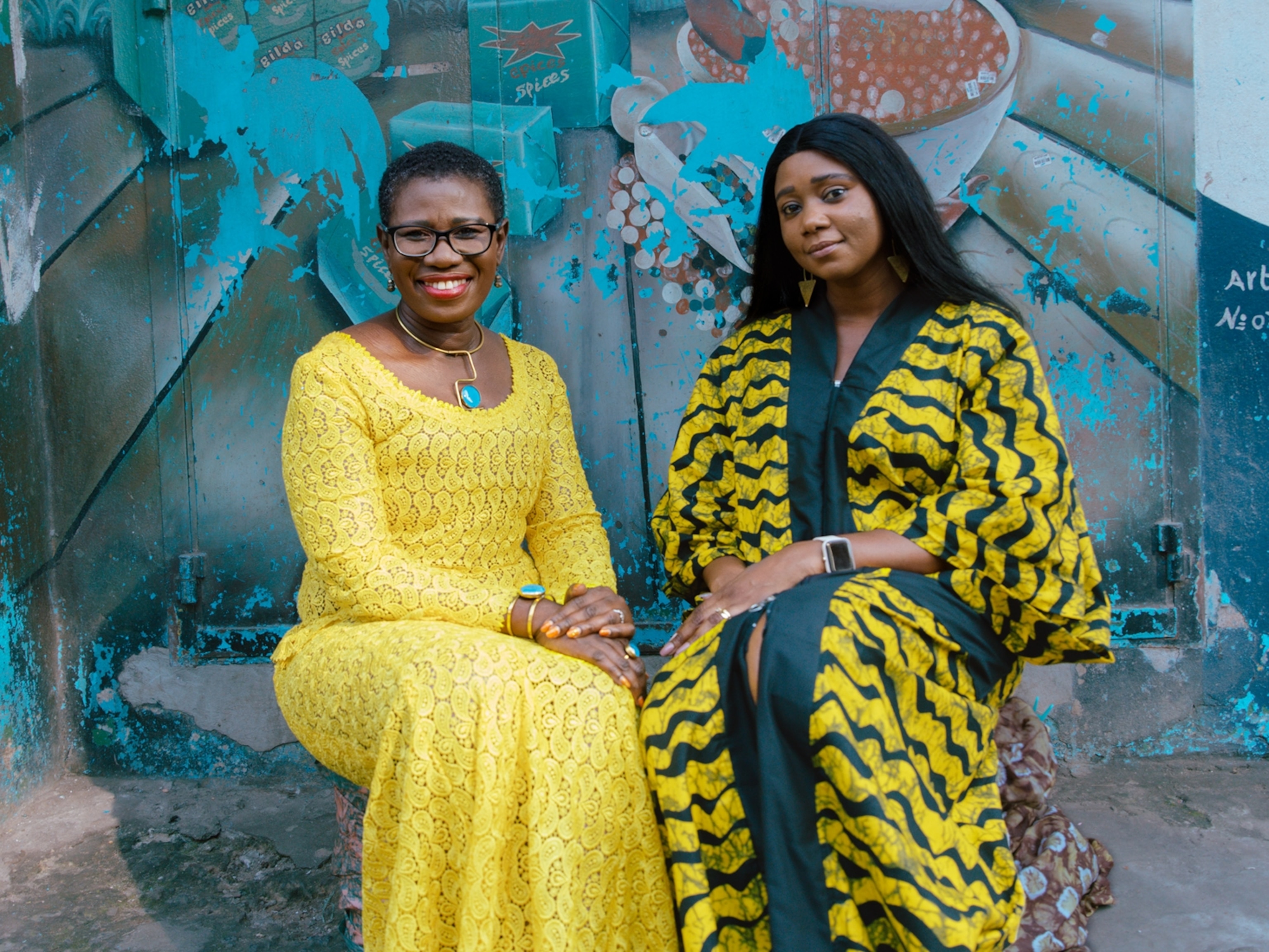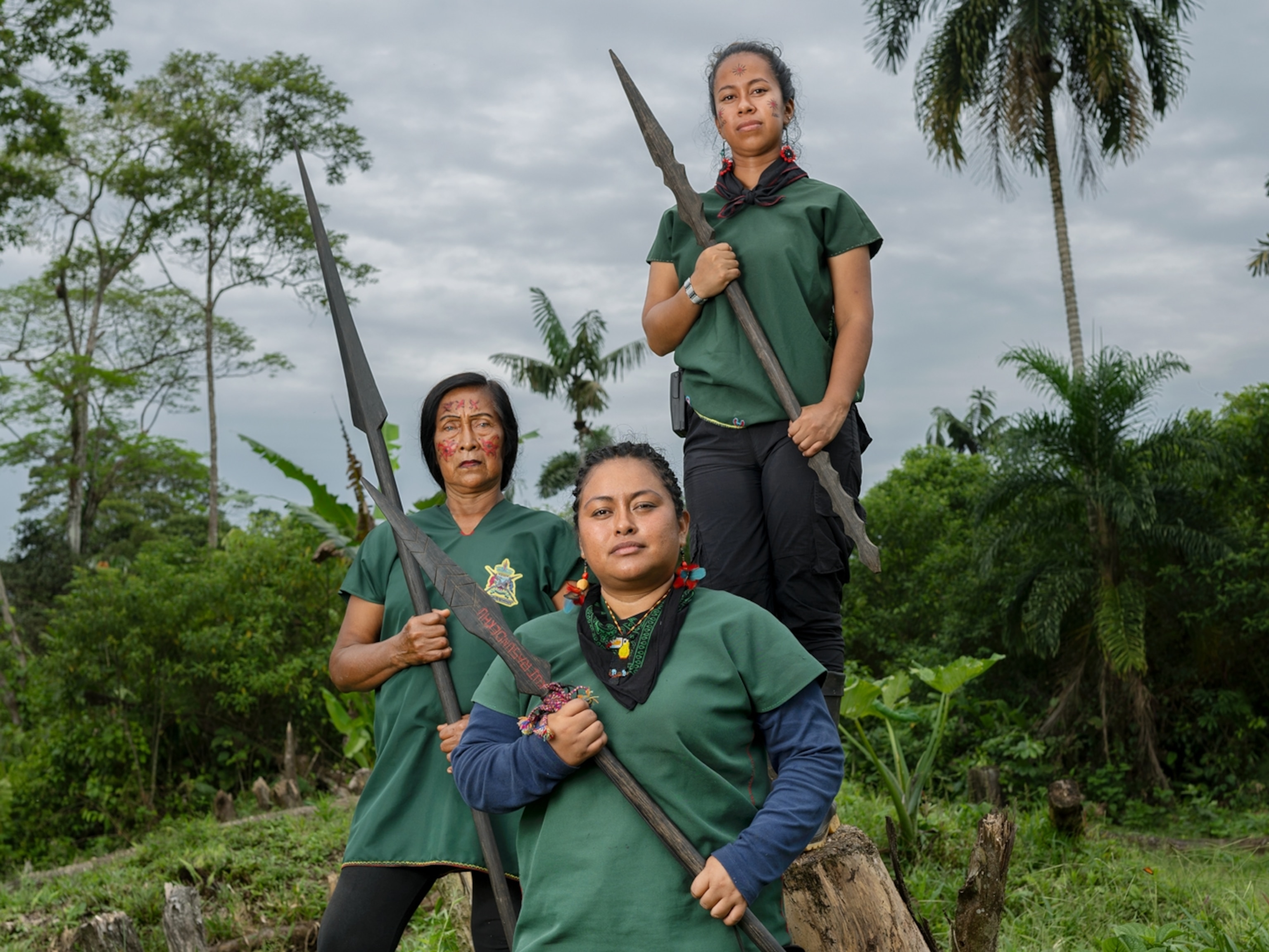Flowing through Peru’s rainforest is a roughly four-mile stretch of water known as the Boiling River. Fed by geothermal springs, it reaches more than 200°F—hot enough to kill animals that slip into its path. The river has long been the stuff of legend, even dismissed by some Peruvians as nonexistent.

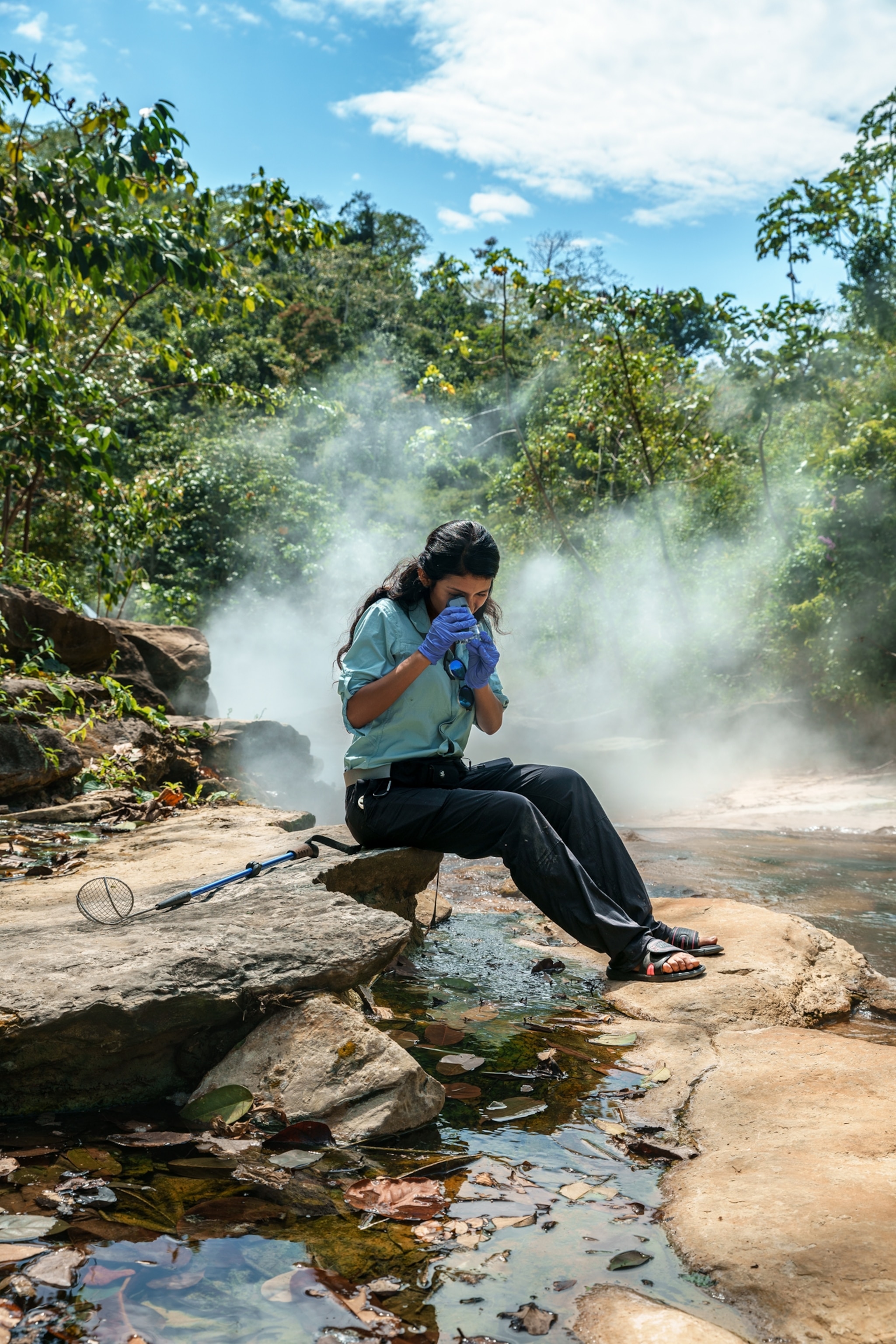
But to Rosa Vásquez Espinoza, a Lima-born chemical biologist and National Geographic Explorer, the Boiling River is very real. As the creator of MicroAmazon, a multidisciplinary examination of the rainforest at its tiniest, she’s studying the microbes in the river’s extreme environment. “No one has ever explored these organisms,” says David Sherman, head of the University of Michigan lab where Vásquez Espinoza is a researcher. The aim is to determine if the microbes “could offer new avenues to developing antibiotics, antifungal agents, or antivirals,” he says. (Vásquez Espinoza has also studied stingless bees that make medicinal honey.)
In 2019 she and her collaborators took microbial samples from 19 sites in and along the river. Now they’re making a virtual map of their work featuring video, photography, and data. Vásquez Espinoza hopes it will facilitate further research. Her ultimate goal: “When we think about the Amazon rainforest biodiversity, we think beyond what we see with our eyes.”
This story appears in the September 2022 issue of National Geographic magazine.


